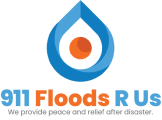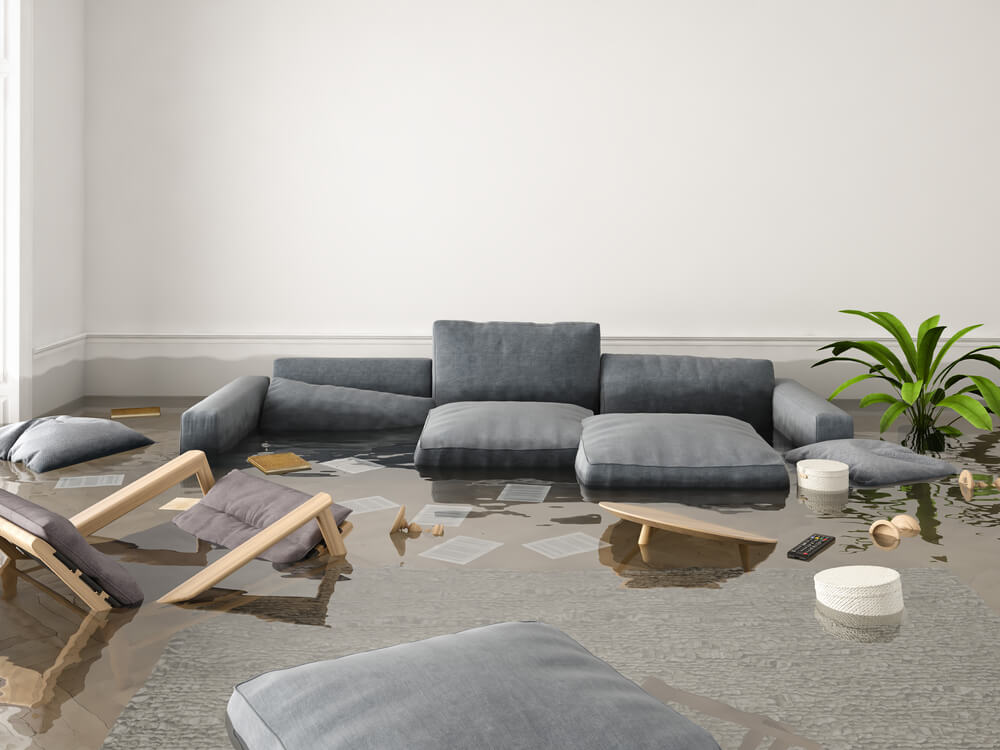Flooding is characterized by rising and/or overflowing water. It can take place indoors or outdoors on normally dry land. Floods are caused by many things, from plumbing issues in a home to burst sewer pipes, hurricanes, and heavy rain.
Flooding in urban areas is a very common phenomenon in the U.S. In the past 25 years, urban flooding has happened at least once every 2 to 3 days. The odds of your home flooding are higher than you may think. What’s more, the chances of serious injuries and fatalities linked to flooding are high if you don’t know what to do in that situation.
That is why it makes sense to prepare in case it happens. We’ve compiled some important steps inspired by information from the CDC and ready.gov, a U.S. national public service campaign that educates Americans on preparing, responding, and mitigating national and man-made emergencies. Look through our list and make sure you are ready to keep your family and your home safe.
Step 1: Think safety
Floods bring forth all kinds of safety risks, from electrocution to structural damage, gas leaks, waterborne diseases, wild animals, etc. You should think of safeguarding yourself from such risks from the start.
To avoid electrocution, turn off the main power to your house. However, this should only be done if you can safely access your main switch without standing in the water. Never turn the power on/off while standing in water or attempt to walk through water to reach the main switch.
In case the flooding has damaged your home’s gas supply, and you smell gas, turn off your main gas valve and open all the windows. If this isn’t possible, don’t switch lights or sockets on since sparks can cause a fire.
Floods also come with other risks: the water could also be contaminated by sewage. Snakes may also be present in flood water, especially when the cause of the flooding is heavy rainfall or hurricanes. This is why you should avoid walking or swimming in floods. Ensure everyone is safe (pets, children, and other occupants) and leave the house for higher ground.
If the floods are linked to a plumbing problem, avoid walking in submerged water without rubber gloves and boots to shield yourself from electrocution and contaminated water.
Step 2: Trace the source of water and turn it off (if possible)
This step assumes your home has flooded due to a plumbing problem within the house, such as a burst pipe or malfunctioning sump pump. Trace the main water valve that feeds the entire home with water and shut it off. This should stop the water flow.
In some cases, you can stop flood water from getting into your house. If the main source of water is a doorway letting in surface runoff, you can attempt to block such areas. Otherwise, move to step 3.
Step 3: Call emergency services for help
If you can’t safely turn off the main power switch, main gas line, or trace the source of flooding in your house, call for help. This should be done before or after evacuating the house, depending on the gravity of your situation.
In some instances, it’s impossible to leave your home. Call 911 for help right away if the situation seems critical. If you can exit safely, call for help while you, your family, and pets (if any) are on dry ground.
Step 4: Seek professional flood restoration services immediately
Emergency services (911) will help you to evacuate your home safely. They can contact electricians to turn the power off safely or call your gas company to turn off the gas supply. However, you’ll have to do the cleanup yourself. Regardless of the source of floods, make sure to call a flood restoration company immediately.
Clean-up and other restoration services should commence immediately to prevent mold and other water damage issues. Stagnant water can damage flooring and furniture in hours, let alone days. According to FEMA (Federal Emergency Management Agency), mold can develop in 24 hours. Act fast to prevent unnecessary costs. Most importantly, leave the cleanup to experts because there are several dangers that may lie just below the surface.
If you choose to do some cleanup, you may expose yourself to contaminants i.e., if the flood water is mixed with sewage water. What’s more, you may need highly specialized services like basement waterproofing, mold contamination testing, mold remediation, crawl space clean-up, etc., that are best left to the experts who have the necessary equipment to do the job safely.
Step 5: Document everything
If you have the relevant insurance, the expenses of restoration services can be compensated to you as well as for other losses, such as damage to electronics, furniture, etc. If the flooding was another party’s fault i.e., poor maintenance of sewer lines, you can seek compensation from local authorities. However, you’ll need proof. Documenting everything (source of water, your flooded home, flood restoration services, repair costs, etc.) will help with such claims. Take photos and videos from the start but your number 1 priority should always be safety: make sure you, your family members, pets, and any other residents are safe before doing anything else.
Once everyone is settled on high ground you can start going through our easy steps to help you prevent further damage to your property or even contain it as best as possible. We understand how stressful this situation can be, so let us help you. After all, we are the experts in this matter. Call us now: , we are open Monday through Sunday from 12 a.m to 12 a.m and we are always ready to help!

